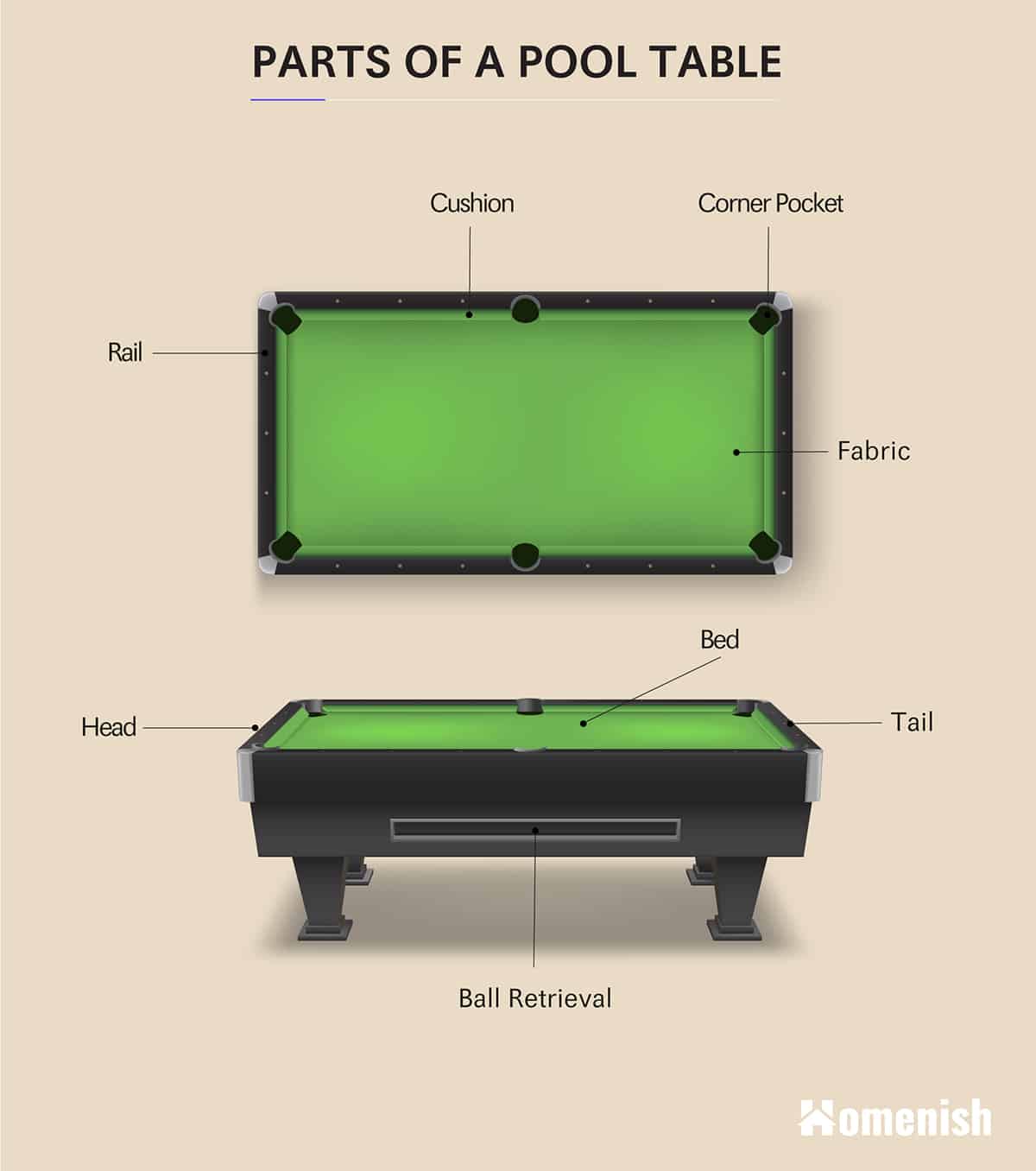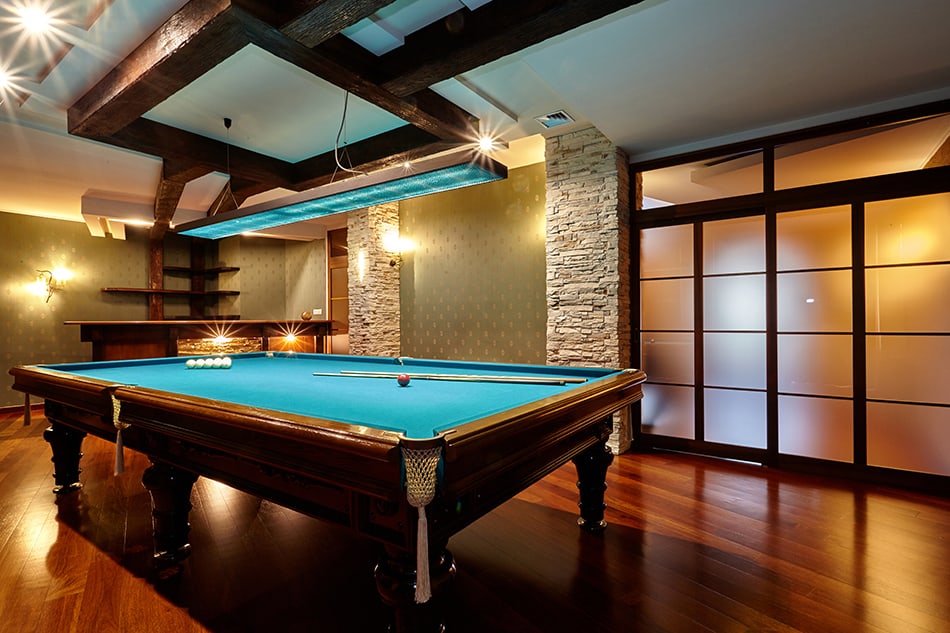Pool tables don’t just look good. They also provide entertainment. They are fast becoming a part of every luxurious home and are usually be placed in the living room, gaming room, or basement bars. They are a great way for parents to spend quality time with their kids, playing in a relaxed environment. It’s the perfect way to spend the weekend playing with your close friends’ to foster a closer relationship. More still, playing pool improves hand-eye coordination, and if you are practicing for a tournament, what better way to do it than to have one of these tables set up right in your home.
So when pool tables break down or fall apart, we want to fix them as soon as possible to continue enjoying the fun. The first step to fixing a pool table is by knowing its parts.
It is worth noting that a pool table looks a lot similar to a carom billiards table. The game of pool though similar in characteristics is not to be confused with the game of Carom billiards. Each has a unique apparatus or equipment for playing the game. One major thing that differentiates both games is that Carom billiards is played on a table that has no pockets and uses 3 balls; one red ball, one white ball with a spot, and one white ball without a spot.
The game of pool, on the other hand, is played on a table that has six pockets with twenty-two balls. There is also a triangular rack for holding these balls in place on a pool table. In some countries, the pool is also called pocket billiards.
We put together a diagram with all the main parts of a pool table here. You also should till the end of the article to understand in detail each part of it.

Cushion
Pool tables have top layers that are typically made from gum or synthetic vulcanized rubber. Cushions are located on the inner sides of the wooden rails of a pool table. Cushions can be made from different kinds of materials in various kinds of designs. They are typically made from an elastic material, for example, vulcanized rubber. The function of the cushion is to cause the balls to bounce back off the rubber. The cushions of a pool table are often covered by fabric. They are squishy to touch. They are a lot more complex than they look, and they sit at somewhat different angles from one pool table to the other.
The Rails
The rails on a pool table are those small bits of wood that you’ll find on the outside of the cloth-covered parts on a pool table. Their job is just to hold the cushions in place and provide some support for them on the table.
The names of the rails depend on their length and the position from which the cue ball is shot on a break. Long rails are the long rails on the side. Headrails are the rail and cushion on the side of the table where the cue ball is shot. They are called head cushions by Americans; the British refer to them as the top cushion or top rail. Foot rails are the opposite short rails and cushions. Foot rails are called bottom rails in Britain.
Head and Tail
With pool tables, the head refers to the half of the pool table from which the cue ball is shot; the foot, on the other hand, refers to the second half of the pool table on which the pool balls are racked.
The Bed of a Pool Table
Beds are the part of the pool table where you play ball. It’s what lies underneath the fabric. Beds are manufactured from up to three slabs of slate, joined together by resin sealing or similar material. These slates are typically manufactured in Italy, China, or Brazil.
The Fabric
This is the cloth that’s usually laid over the cushion on a pool table. Pool table fabrics are made from woven wool or a mix of wool and nylon called baize. This fabric is often mistaken for felt, but it’s not. Felt is made from pressed material and not woven. The heavier the woven material laid over a pool table cushion, the slower the ball. Pool table fabrics are typically green. This stems from an ancient design that made the table surface of the indoor game resemble the grass that the original game had been played on.
Corner Pocket
These are the openings found at each corner of the pool table; the balls usually fall inside the corner pockets. On every pool table, you’ll find six pockets, one at the top, middle, and tail of the table on each side
Opening for Ball Retrieval
When balls fall into the table pockets, they are retrieved via a hole on the side of the pool table especially designed for ball retrieval.
The Cue
A pool table cue is also sometimes called a pool stick, billiards cue, or cue stick. This is the stick primarily used by players to strike a ball during a pool game. This same type of cue stick is also used to play similar games such as carom billiards or snooker. Cue sticks are typically made of only two parts, the butt and the shaft. The shaft is the slimmer end of the pool stick, while the butt, also known as the bottom of the cue stick, is the fatter end of the pool cue.
The Size of a Pool Table
The amount of space you have available for your pool table would largely determine its size. Professional pool tables could be as tall as 9 ft by 4.5 ft, while a lot of other tables are only 8 x 8 ft. The bed of a pool table is required to be made of slate not smaller than 1 inch.
Pool Table material
In the past, pool tables were typically made from hardwood, which means they were sturdy and long-lasting. Presently, these tables could be made from a lot more types of materials than just wood. You’ll easily find pool tables made from rubber, metal, slate; these types of materials help the balls to roll more swiftly on the table.






